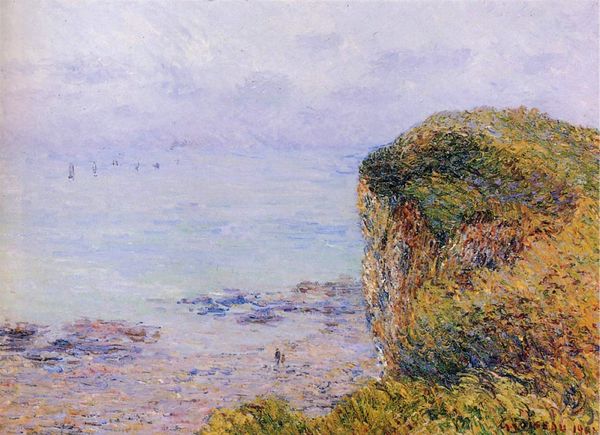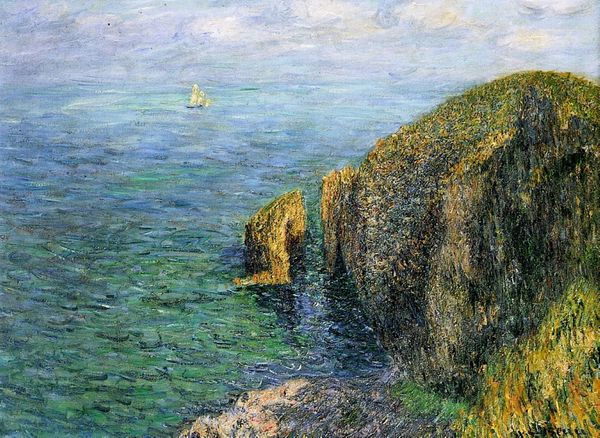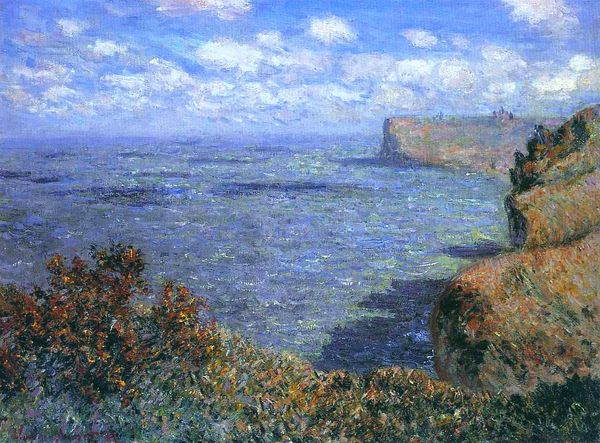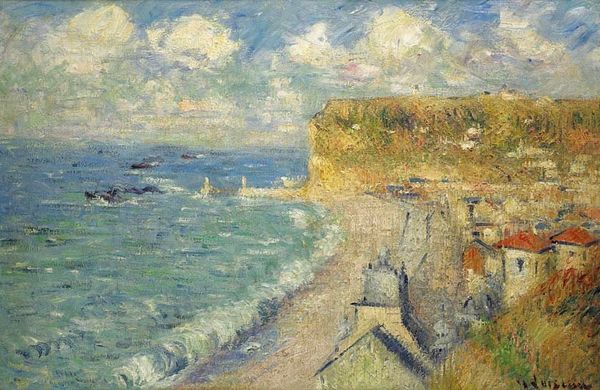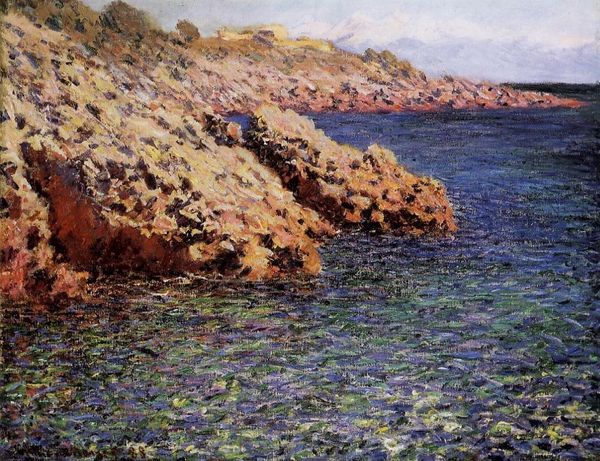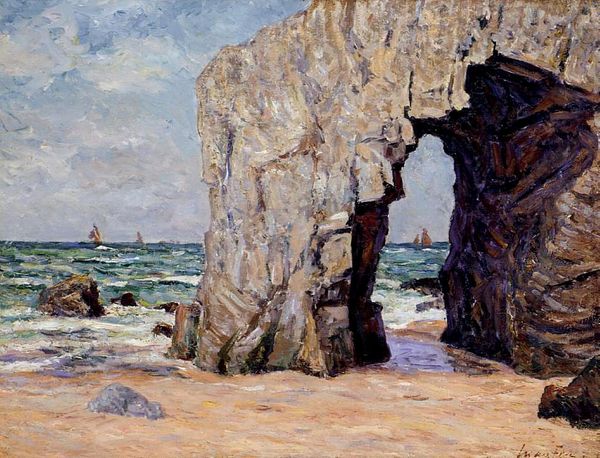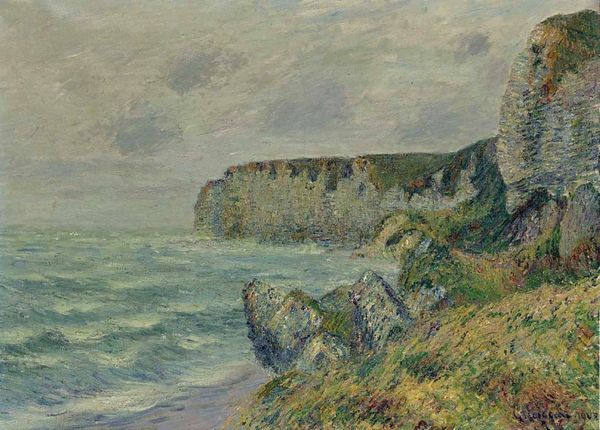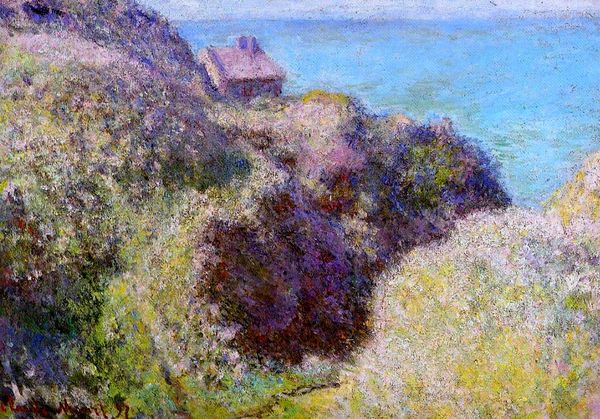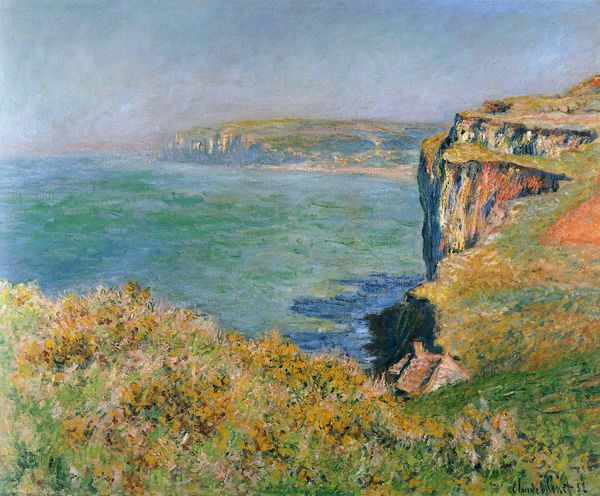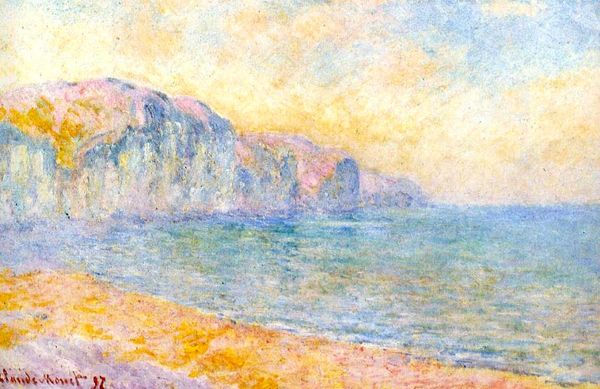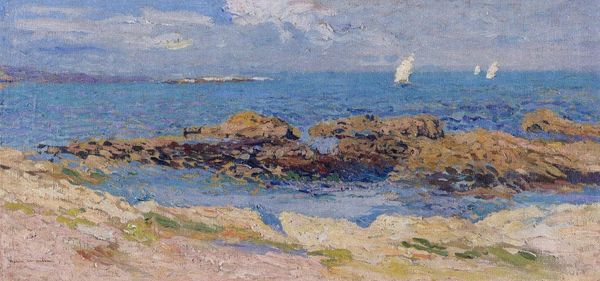
painting, plein-air, oil-paint
#
sky
#
cliff
#
painting
#
impressionism
#
plein-air
#
oil-paint
#
landscape
#
impressionist landscape
#
ocean
#
seascape
#
water
#
sea
Copyright: Public domain
Gustave Loiseau's "Cliffs by the Sea" captures the essence of nature through its dominant symbols, especially the cliff itself. The cliff, a steadfast structure against the mutable sea, embodies permanence and resilience, evoking feelings of awe and sublime beauty. This motif is not unique to Loiseau; cliffs have featured prominently in art across different eras. We find them in Romantic paintings, such as Caspar David Friedrich’s "Chalk Cliffs on Rügen," where the cliff is a dramatic stage for human contemplation. In Loiseau’s vision, the cliff is rendered with impressionistic brushstrokes, softening its severity, yet its symbolic weight remains. The cliff is a place of transition, a point of separation and contemplation. Psychologically, this liminal space allows the viewer to engage with a fundamental tension: the allure of the unknown versus the comfort of the known. As you gaze upon the image, allow yourself to be drawn into this interplay, a visual echo of our collective quest for meaning, perpetually recast across history.
Comments
No comments
Be the first to comment and join the conversation on the ultimate creative platform.
